Compounding for Food and Food Additive Allergies
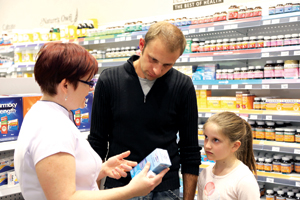 Australia has one of the highest reported incidences of food allergies in the world, and the numbers are growing at an alarming rate with one in 10 babies born in Australia today forecast to develop a food allergy. Food allergy is an allergic response to particular foods or food additives. Food intolerance occurs when the body has a chemical reaction to eating a particular food or drink. Unlike food allergies, intolerances do not involve the body’s immune system. Food intolerance symptoms include headaches, bloating, wind, nausea, mouth ulcers or hives, and can occur several hours after a food is eaten.
Australia has one of the highest reported incidences of food allergies in the world, and the numbers are growing at an alarming rate with one in 10 babies born in Australia today forecast to develop a food allergy. Food allergy is an allergic response to particular foods or food additives. Food intolerance occurs when the body has a chemical reaction to eating a particular food or drink. Unlike food allergies, intolerances do not involve the body’s immune system. Food intolerance symptoms include headaches, bloating, wind, nausea, mouth ulcers or hives, and can occur several hours after a food is eaten.
An allergic reaction can quickly become life threatening and people can die from food allergy. It’s up to all of us to be allergy aware – to know how to minimise the risk of a reaction, to know what to do if a reaction happens, and to understand and support family, friends and colleagues living with food allergies.
Allergy & Anaphylaxis Australia (A&AA) is a charitable, not for profit organisation whose aim is to improve awareness of allergy in the Australian community. They do this by sharing current information, education, advocacy, research, guidance and support.
The signs and symptoms of a food allergic reaction may occur almost immediately after eating or most often within 20 minutes to 2 hours after eating. Rapid onset and development of potentially life threatening symptoms are characteristic markers of anaphylaxis.
Allergic symptoms may initially appear mild or moderate but can progress very quickly. The most dangerous allergic reactions (anaphylaxis) involve the respiratory system (breathing) and/or cardiovascular system (heart and blood pressure).
Common signs and symptoms of food allergy:
- · hives, welts or body redness
- · difficult and/or noisy breathing
- · swelling of the face, lips, eyes, throat or tongue
- · vomiting, abdominal pain, diarrhoea
- · tingling of the mouth
- · difficulty talking and/or hoarse voice
- · wheeze or persistent cough
- · persistent dizziness and/or collapse
Removing allergens from the house makes life much easier for the allergy sufferer; however this isn’t always possible, particularly if the allergen is egg or milk, often staple, healthy foods for most of the family. Always read food labels on purchasing foods and then again when about to eat them.
If you do have the allergen in your home, try these tips:
- Wash contaminated kitchen utensils in hot soapy water or in the dishwasher.
- Use disposable paper towelling to wipe surfaces where the allergen has been used to avoid contaminating your everyday sponge or dishcloth.
- If egg allergic, use a sealed labelled container in the fridge to contain foods like mayonnaise, eggs, Pavlova, leftover quiche, or muffins.
- Use a labelled basket in the fridge and/or pantry for foods that are safe for the person with a particular food allergy to eat. Place it on the top shelf of the fridge so other foods cannot spill into it.
- Use separate oil for cooking food for the person with a food allergy.
Your doctor may recommend you carry an injectable dose of adrenaline with you at all times. Adrenaline is used in severe reactions and can be a life-saving measure. Adrenaline is available for eligible patients on the PBS and can also be bought over the counter after a pharmacist consultation.
The risk of developing food allergies is greater if you have a family history of allergic conditions. If you or your partner has an allergy, your child has a 30 per cent chance of inheriting the allergic gene and therefore could develop eczema, asthma, hay fever or a food allergy. If both parents have a history of some allergic condition, your child has a 40 to 60 per cent chance of having a child with some form of allergy.
Some medicines contain preservatives or food additives for colouring or flavouring that can cause allergic reactions in some people. Ask your pharmacist if a medicine contain a preservative or additive that may upset you. If you need a medicine that has an additive that causes a problem we can compound the medicine into a different formulation without the allergen. Ask your doctor to contact Fresh Therapeutics to discuss the best formulation for you.
It is important to speak to a health professional about any concerns you may have. If you or someone you care for has a reaction to any food, seek medical advice. If you are worried about a serious reaction, call an ambulance or go directly to hospital.




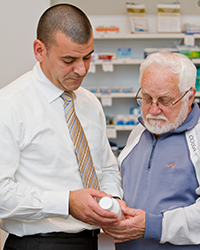
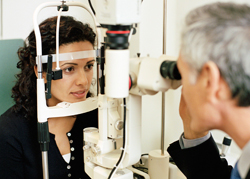 Glaucoma is an eye disease that can cause vision loss and is potentially blinding. It runs in families. If someone in your family has glaucoma, you are up to 10 times more likely to develop glaucoma. You probably have never noticed or even thought about glaucoma, as it is rarely discussed. In Australia, approximately 300,000 people have glaucoma. However, about half of these people don’t even know they have it. Generally, there is no pain associated with glaucoma, and the loss of sight is gradual. Peripheral vision (side vision) is usually affected first, and many people don’t even notice it’s gone.
Glaucoma is an eye disease that can cause vision loss and is potentially blinding. It runs in families. If someone in your family has glaucoma, you are up to 10 times more likely to develop glaucoma. You probably have never noticed or even thought about glaucoma, as it is rarely discussed. In Australia, approximately 300,000 people have glaucoma. However, about half of these people don’t even know they have it. Generally, there is no pain associated with glaucoma, and the loss of sight is gradual. Peripheral vision (side vision) is usually affected first, and many people don’t even notice it’s gone.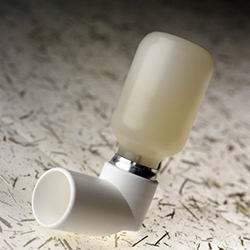 People with asthma have sensitive airways in their lungs which can make breathing difficult when certain triggers cause the airways to narrow because:
People with asthma have sensitive airways in their lungs which can make breathing difficult when certain triggers cause the airways to narrow because: This week (10-17 April) is Parkinson’s Awareness Week. In Australia, Parkinson’s Australia is the national peak body and charity representing Australians living with Parkinson’s, and has a wide range of information sheets and advice available on their website:
This week (10-17 April) is Parkinson’s Awareness Week. In Australia, Parkinson’s Australia is the national peak body and charity representing Australians living with Parkinson’s, and has a wide range of information sheets and advice available on their website: 
 Over time, the daffodil flower has been regarded as a symbol of rebirth – a sign of the new beginnings that come with spring.
Over time, the daffodil flower has been regarded as a symbol of rebirth – a sign of the new beginnings that come with spring.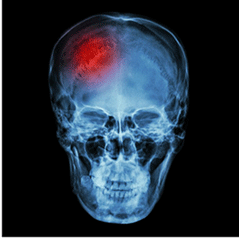 This month you may notice people walking around wearing distinctive bright blue beanies. Those people are joining BANGONABEANIE – a national campaign to raise awareness for Brain Injury Awareness Week, which runs from 17–23 August 2015.
This month you may notice people walking around wearing distinctive bright blue beanies. Those people are joining BANGONABEANIE – a national campaign to raise awareness for Brain Injury Awareness Week, which runs from 17–23 August 2015. The first week of August, 1–7, is World Breastfeeding Week. In Australia, most babies (96%) are initially breastfed and it’s a key contributor to infant health. At this time, let’s consider taking medicines when breastfeeding.
The first week of August, 1–7, is World Breastfeeding Week. In Australia, most babies (96%) are initially breastfed and it’s a key contributor to infant health. At this time, let’s consider taking medicines when breastfeeding.